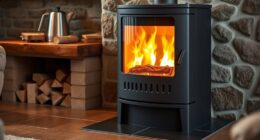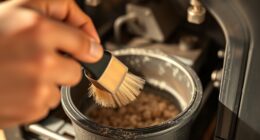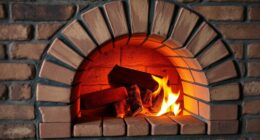
After owning a wood stove for many years, I have realized how crucial it is to make sure the chimney is correctly sized.
Picture this: a roaring fire, crackling logs, and wisps of smoke escaping effortlessly into the sky.
But how tall should a wood stove chimney be?
In this article, I’ll guide you through the factors to consider, the role of location and roof pitch, and how to navigate local building codes.

Let’s find the ideal height for your wood stove chimney and ensure a safe and efficient heating experience.
Key Takeaways
- The type of fuel, local building codes, distance between appliance and roof, nearby structures, and desired draft all play a role in determining the height of a wood stove chimney.
- The location of the chimney is important as wind patterns can affect the draft and draw of the chimney, and a taller chimney can help mitigate the negative effects of strong winds.
- The roof pitch significantly impacts the height of the chimney, with a steeper roof pitch requiring a taller chimney for proper smoke dispersion.
- Navigating local building codes is crucial to ensure compliance and safe operation of the chimney, as well as to avoid fines and legal issues.
Factors to Consider When Determining Chimney Height
When determining the height of my chimney, I need to consider factors such as the type of fuel I’m using and the local building codes. These factors play a crucial role in ensuring the safe and efficient operation of my wood stove.
The type of fuel, whether it’s wood or another type, affects the temperature and volume of the smoke produced. This, in turn, influences the draft and flow of gases up the chimney.
Additionally, local building codes provide guidelines on chimney height to maintain proper ventilation and prevent smoke from being a nuisance to neighbors. Chimney height calculations take into account the distance between the appliance and the roof, the height of nearby structures or obstructions, and the desired draft for optimal combustion.
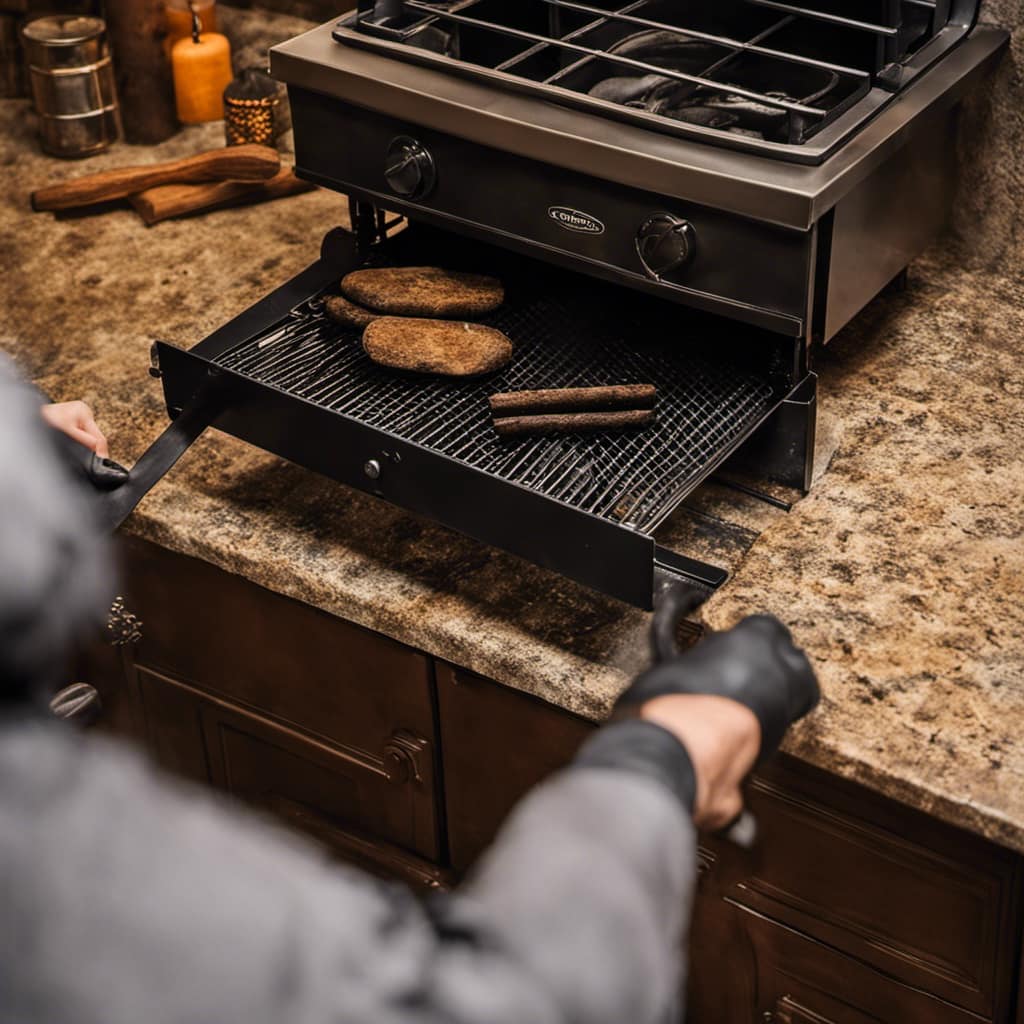
The Importance of Location in Determining Chimney Height
I must carefully consider both the specific location and the surrounding structures when determining the appropriate height for my wood stove chimney.
The height of the chimney plays a crucial role in the efficient operation of the wood stove and must be carefully calculated to ensure optimal performance. Here are some key points to consider:
-
Impact of wind patterns on chimney height: Wind patterns can affect the draft and draw of the chimney. A taller chimney can help mitigate the negative effects of strong winds, preventing smoke from being blown back into the house.
-
Relationship between chimney height and efficient wood stove operation: A properly sized chimney height ensures a good draft, allowing for efficient combustion and the removal of smoke and gases. This results in cleaner burning and increased heat output from the wood stove.
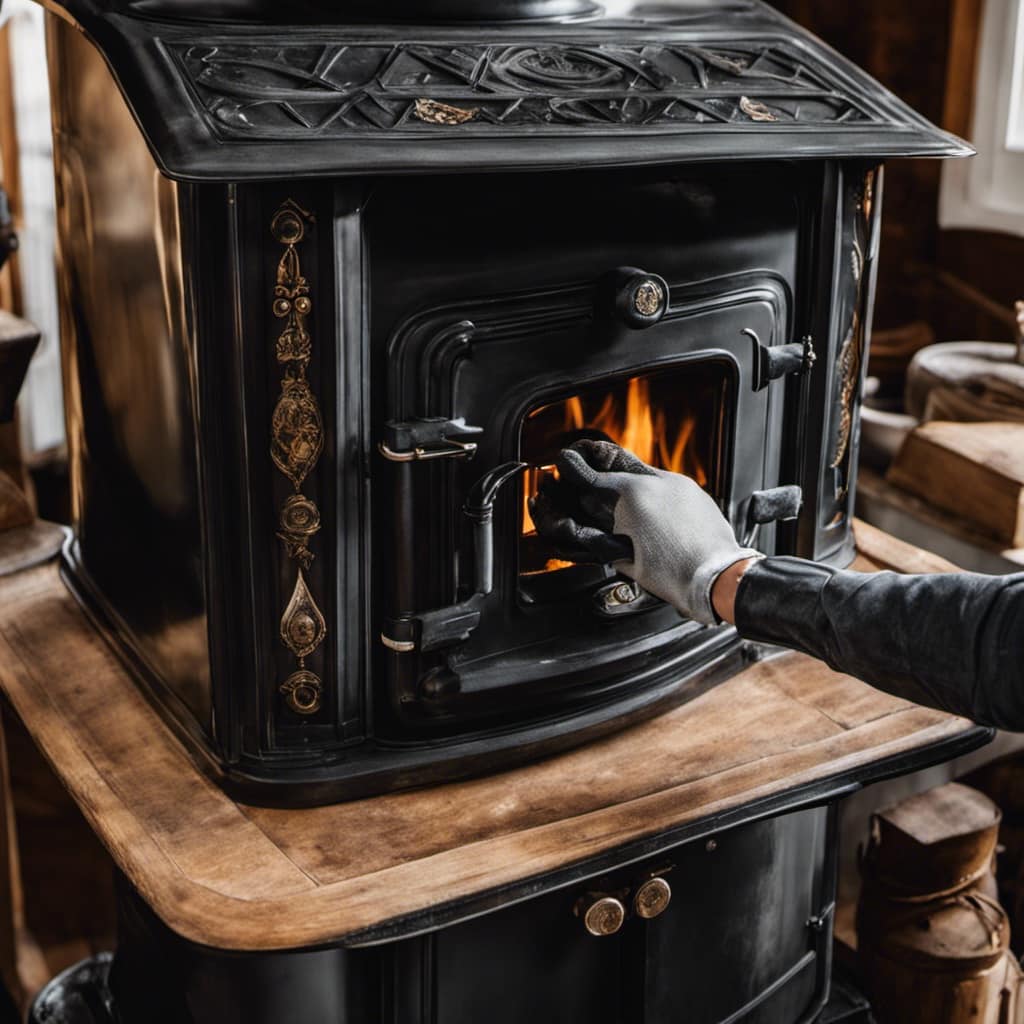
-
Distance from surrounding structures: The height of the chimney should be determined based on its proximity to nearby structures. It should be tall enough to prevent any potential fire hazards from sparks or heat, while also avoiding any interference with the surrounding structures.
-
Consideration of local building codes and regulations: It’s important to check local building codes and regulations to ensure compliance when determining the appropriate height for the wood stove chimney. This ensures safety and adherence to legal requirements.
Taking these factors into account, I can make an informed decision about the proper height for my wood stove chimney, ensuring efficient operation and safe use of my wood stove.
Understanding the Role of Roof Pitch in Chimney Height
The roof’s pitch significantly impacts the height of my chimney, affecting its efficiency and overall performance. When determining the appropriate height for a wood stove chimney, it is crucial to consider the roof pitch as it directly influences the draft and ventilation of the system. A steeper roof pitch will require a taller chimney to ensure proper smoke dispersion and prevent downdrafts. On the other hand, a lower roof pitch may allow for a shorter chimney height. To further understand the relationship between roof pitch and chimney height, refer to the table below:

| Roof Pitch | Chimney Height Calculation |
|---|---|
| Steep | Multiply roof pitch by 2 |
| Moderate | Multiply roof pitch by 1.5 |
| Low | Multiply roof pitch by 1 |
Considering the impact of roof pitch on chimney height is essential for ensuring optimal performance and safety. However, it is also important to navigate local building codes for chimney height requirements to meet legal standards and maintain a secure installation.
Navigating Local Building Codes for Chimney Height Requirements
To comply with local building codes, I must navigate the requirements for chimney height when installing my wood stove. It can be a daunting task, but understanding the common chimney height requirements and obtaining the necessary local building permits is crucial.
Here are a few things to consider that may evoke an emotional response:
-
Safety: A properly installed chimney ensures the safe operation of your wood stove, reducing the risk of fire hazards.
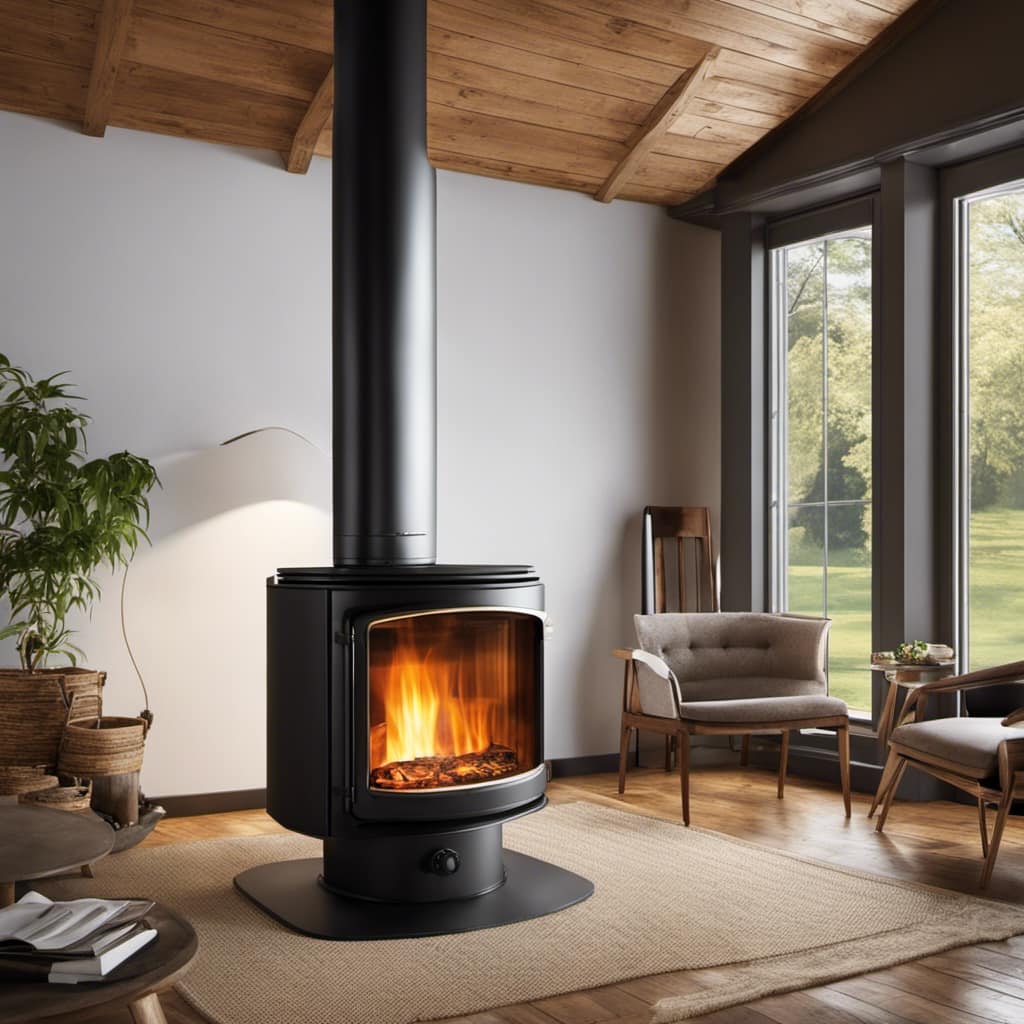
-
Efficiency: The height of your chimney affects the draft and airflow, maximizing the efficiency of your wood stove and reducing energy consumption.
-
Compliance: Adhering to local building codes and obtaining permits demonstrates responsible homeownership and avoids potential fines or legal issues.
-
Peace of Mind: A well-designed chimney height provides peace of mind, knowing that your wood stove is installed correctly and functioning optimally.
Now, let’s dive into finding the ideal height for your wood stove chimney.

Finding the Ideal Height for Your Wood Stove Chimney
Installing a chimney with the ideal height ensures proper ventilation for my wood stove. When it comes to determining the optimal height for my chimney, I need to consider several factors.
First and foremost, calculating the optimal draft is crucial. This involves measuring the height of my home, the distance from the stove to the chimney, and the outside temperature. By using these measurements, I can determine the ideal height that will allow for efficient airflow and prevent any backdraft.
Equally important is choosing the right chimney material. Stainless steel is a popular choice due to its durability and resistance to corrosion. It also provides excellent insulation, which helps maintain the temperature inside the chimney and improves the efficiency of the wood stove.
Ultimately, finding the ideal height and selecting the right chimney material are key to ensuring a safe and effective ventilation system for my wood stove.

Frequently Asked Questions
How Much Does It Cost to Install a Wood Stove Chimney?
Installing a wood stove chimney can cost between $500 and $2000, depending on various factors such as the type of chimney, material used, and the complexity of the installation process.
Can I Use a Metal Chimney Instead of a Masonry Chimney for My Wood Stove?
Yes, you can use a metal chimney instead of a masonry chimney for your wood stove. Metal chimneys offer benefits like cost-effectiveness, easy installation, and durability. However, masonry chimneys have advantages such as better insulation and aesthetic appeal.
Are There Any Restrictions on Chimney Height for Historical Buildings?
Are there any restrictions on chimney height for historical buildings? Yes, there are chimney height regulations in place to preserve the integrity and aesthetics of these structures. It’s important to adhere to these guidelines when installing a wood stove chimney.
What Are the Potential Dangers of Having a Chimney That Is Too Short?
Potential dangers and safety concerns arise when a wood stove chimney is too short. These include inadequate ventilation, increased risk of carbon monoxide poisoning, and potential for chimney fires. It is crucial to ensure proper chimney height for optimal safety.

Can I Install a Wood Stove Chimney on a Flat Roof?
Yes, you can install a wood stove chimney on a flat roof. There are pros and cons to consider, such as ease of installation and potential for leaks. Proper insulation and flashing are essential for a successful installation.
Conclusion
In conclusion, determining the height of a wood stove chimney involves considering factors such as location, roof pitch, and local building codes.
While some may argue that a taller chimney is always better, it’s essential to find the ideal height that meets safety requirements and ensures efficient operation.
By carefully considering these factors, you can enjoy the warmth and ambiance of your wood stove while maintaining a safe and functional chimney system.

Growing up surrounded by the vast beauty of nature, Sierra was always drawn to the call of the wild. While others sought the comfort of the familiar, she ventured out, embracing the unpredictable and finding stories in the heartbeat of nature.
At the epicenter of every remarkable venture lies a dynamic team—a fusion of diverse talents, visions, and passions. The essence of Best Small Wood Stoves is crafted and refined by such a trio: Sierra, Logan, and Terra. Their collective expertise has transformed the platform into a leading authority on small wood stoves, radiating warmth and knowledge in equal measure.








